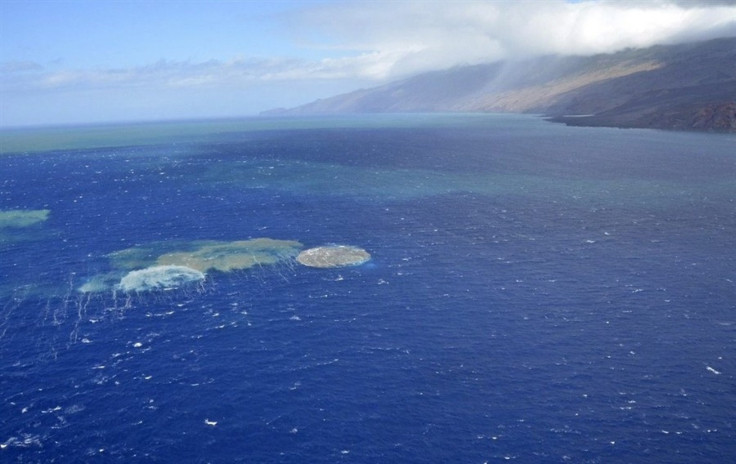El Hierro Volcanic Eruption Creating a New Canary Island?

It may be just a matter of time before a new Canary Island emerges from the sea off the coast of El Hierro.
An underwater volcano has bubbled toward the surface off the coast the southernmost island of the Canaries for over a month now, staining the sea green and spewing magma up to 65 feet in the air.
Until recently, the explosive power of the volcano was barely visible from the surface. Now, stones and debris have been seen shooting out of the volcano as it rises toward open air.
The underwater volcano is just over 225 feet from the surface according to Spain's National Geographic Institute (IGN), and many in the Canary Islands are brainstorming names for the new island. Proposed names include The Discovery, Atlantis, and The Beast.
Yet, even if the volcano does surface (as predicted), a new name may not be necessary. Just three miles off the southern coastline of El Hierro, the potential island could easily join up with the existing island over time.
Either way, the anticipation of a rising land mass has people excited. The Canary Islands newspaper La Provincia proclaimed, The Monster Rises Out of the Water. Meanwhile other Spanish newspapers debate who would take responsibility for the new territory.
As the volcano hiccups toward the surface and lava piles on top of an underwater mountain, scientists keep a careful eye on the situation.
Last week, hundreds of residents of El Hierro were once again forced to leave there homes as roads closed and sulfurous fumes drifted over the land. The Volcanology Institute of the Canaries, Involcan, reported a three-fold increase in carbon dioxide levels - a warning that further volcanic activity can be expected.
The region has experienced over 10,000 minor earthquakes since July. Beginning on Oct. 22, the tremors became stronger with some surpassing four on the Richter scale. More worrisome, the quakes, which were once quite deep, have become increasingly shallow.
The volcanic eruption near El Hierro is Spain's first since the 1971 eruption of the Teneguia Volcano on the nearby island of La Palma.
El Hierro, which means iron is Spanish, was designated by UNESCO as a Biosphere Reserve in 2000 with 60% of its territory protected. Although over 200 years have elapsed since the last eruption, El Hierro has the largest number of volcanoes in the Canaries with over 500 open sky cones, another 300 covered by the most recent outflows, and some 70 caves and volcanic galleries.
Heavily dependent on visitors, tourism accounts for nearly a third of the Canary Islands' GDP. While the current situation has had a negligible effect on the industry, were a significant eruption to occur, the revenue loss would be devastating.
READ ALSO:
The Ten Most Active Volcanoes in the World
Eruption of Undersea Volcano Successfully Predicted for First Time
© Copyright IBTimes 2024. All rights reserved.






















